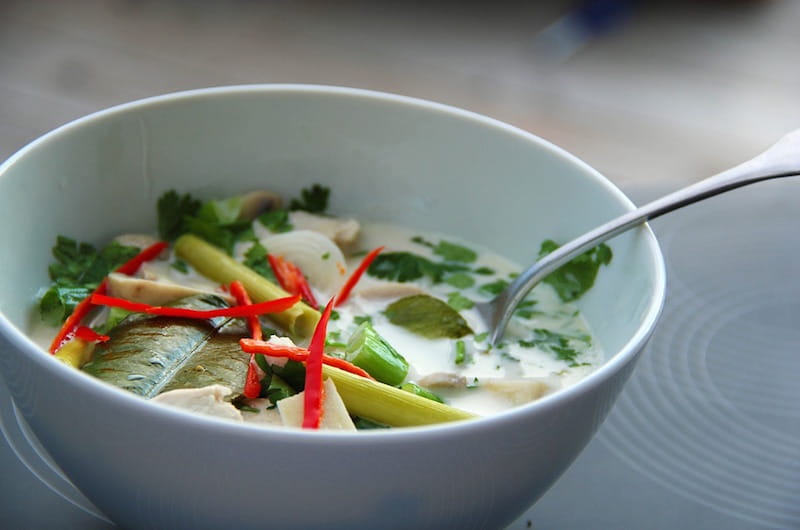Study Shows Mismatched Cuisine Could Make Your Meal More Enjoyable


Ordering an Italian main course? According to a Drexel University food science researcher, if you want to be certain you’ll enjoy your meal, you should probably get the spring rolls to start.
Jacob Lahne, PhD, an assistant professor in the Center for Hospitality and Sport Management, recently found that a categorical mismatch of cuisine could result in an overall more enjoyable meal.
Lahne tested and analyzed subjects’ hedonic (liking) responses to a main dish of “pasta aglio e olio” (pasta with garlic and oil) after they had either an appetizer of Italian minestrone or Thai tom kha soup. So, in one case the appetizer matched the cuisine type of the main dish and in the second was a clearly different cuisine.
By introducing two versions of each soup, one good (made with better quality ingredients) and one mediocre – Lahne was able to test the differences in response to the main dish depending on the soup’s cuisine type and quality.
The finding? Subjects liked the main dish and the overall meal more when they had a mediocre Italian soup to start. Conversely, they enjoyed the main dish and meal less when they started with the good Italian soup. This effect did not occur when subjects started with the Thai soup – liking for the pasta dish did not change with the Thai soup quality. With that in mind, restaurants now have evidence that a main course may be negatively affected by an appetizer that is “too good.” But, by actively varying dishes by cuisine type, a negative response to the overall meal could improve, or be avoided altogether.
“We were investigating several aspects of contrast in restaurant meals in this study,” said Lahne. “Once we found it was possible [enjoyment of an appetizer affecting overall impression or enjoyment of a meal], we wanted to test if the effect still occurred with soups from different cuisines as the appetizers – first because soup as a type of dish is a distinct category of food from most main dishes (including this pasta), and second because it seems likely that you wouldn’t compare a Thai soup to an Italian main dish.”
As a food scientist, Lahne specializes in sensory evaluation. His research is on understanding human sensory responses to foods and other products. With his co-authors, Debra Zellner, PhD, a professor at Montclair State University, and Richard Pepino, executive chef of Drexel’s Academic Bistro, he published the findings of the study, "You’ll spoil your dinner: Attenuating hedonic contrast in meals through cuisine mismatch" in Food Quality and Preference.
This study provides an extension to his previous research and findings, “The Great is the Enemy of the Good: Hedonic Contrast in a Coursed Meal," also published in Food Quality and Preference in 2015. That study investigated whether the hedonic value of an appetizer affected the hedonic value of the subsequently eaten main course in a real-world meal setting (since hedonic contrast is typically tested laboratory settings). Both studies were conducted with customers in the Academic Bistro, the Center for Hospitality and Sport Management's student-run, culinary-training restaurant. Dishes and ingredients were chosen based on the expertise of Pepino.
According to Lahne, his research on the hedonic contrast in meals through cuisine mismatch is more targeted to those in the restaurant industry, such as owners and chefs, than consumers.
What’s next? Lahne plans to continue researching the limits of hedonic contrast to determine if there are other ways to counter bias formed from a previous course (for chefs who don’t want to mismatch cuisines). “We want to keep pushing the boundaries to learn more about contextual experiences,” Lahne said. “Often, in traditional high-cuisine meals, patrons are offered palate cleansers to neutralize taste buds – a grapefruit sorbet or pickled ginger – but is this enough to interrupt a comparison from one course to another that precedes it?” He’d also like to take the study global to see if the same effects occur in a different cultural environment.
In This Article
Contact
Drexel News is produced by
University Marketing and Communications.